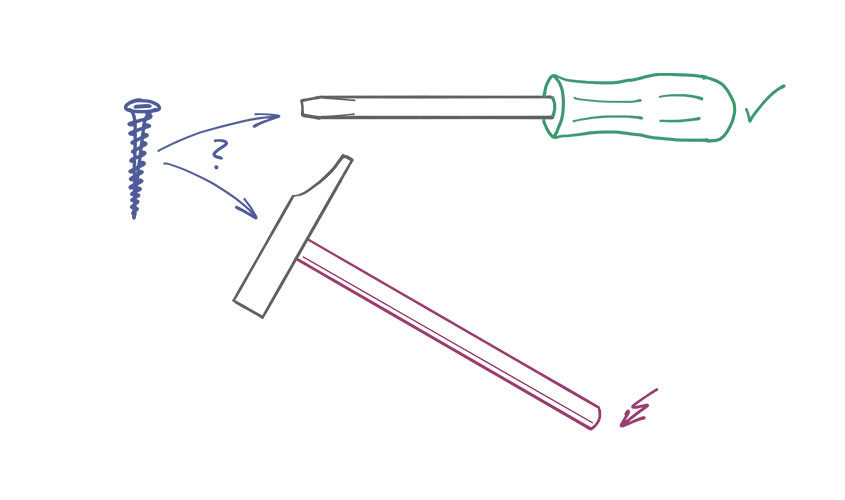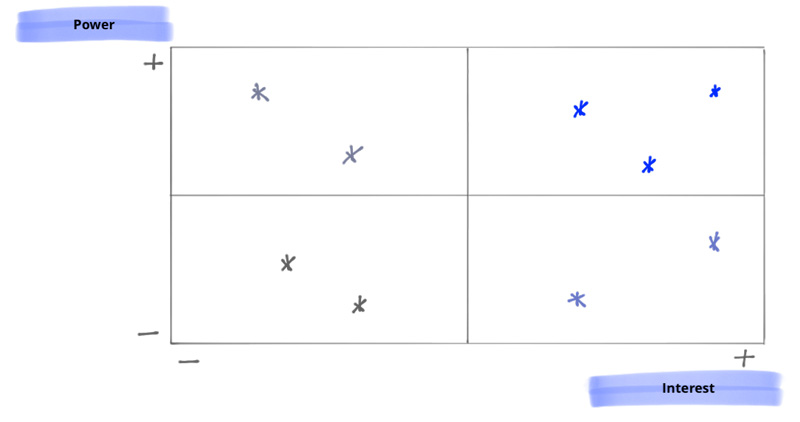Management tools are a dime a dozen. And yet, contrary to popular belief, most of them are good and helpful if used correctly and in an adequately defined context.
In “Tool Box Talks” we introduce you to common and less well-known tools and show you how you can exploit their potential for your enterprise, with today’s focus on the Stakeholder Mapping.

What is the use of stakeholder mapping and when should they be applied?
Stakeholder mapping by means of assessment grids is an important tool for managing different groups of interest. It helps to subsume individual persons under predefined clusters, making it possible to deal and communicate with stakeholders effectively and appropriately.
Visualising stakeholders is particularly useful in project and change management processes, but also whenever different interests of various individuals and groups of persons have to be considered, for instance when it comes to strategic planning or preparing projects, events and workshops.

How do you create a stakeholder assessment grid?
To build an effective stakeholder assessment grid, you need to go through the following three steps:
- Identify the stakeholders
- Assess the stakeholders’ interests
- Rate the stakeholders’ influence.
First you need to make a list of all groups of interest that is as comprehensive as possible. These groups can include both individuals and bigger groups. Classifications into groups should only be carried out if they really share the same interests (e.g. team members of a specific department) or if, from the project’s perspective, they can be regarded as a unified entity (e.g. residents living next to a factory plant).
Having determined who your stakeholders are, you need to assess their level of interest in your project. Here a simple distinction between “interested” and “no interest” will be sufficient. A valuable additional piece of information to be added to your matrix as well is whether a stakeholder is supportive of or hostile to your goals.
Finally, you need to assess how much invidual groups of interest can impact whether or not your reach your goals. Here as elsewhere you should use the simple characteristics of “high level of impact” and “low level of impact” as the stakeholder mapping intends to provide a qualitative comparison and not a quantitative ranking.
The assessment having been finished, the stakeholders can be plotted on a matrix, thus visualising their qualities relevant to the project in question. To do so, you build a two-dimensional assessment grid, with the x-axis representing the stakeholders’ impact. Their attitude towards the project’s aims can be additionally highlighted by a suitable colour (green = same goals; red = competing goals).

Beware of pitfall
Be careful when establishing different groups of interest. If too many people are classified as stakeholders, the grid will be confusing. To prevent this from happening, you should cluster people into groups. Make sure that the attributes you attribute to a group are really shared by all of its members. If in doubt, it is better not to categorise people into groups until you have assessed the relevant stakeholders individually.
Another trap you can fall into is if you overestimate a stakeholder’s real power. Here you need to distinguish clearly between somebody’s official position and their actual impact on the project. This is particularly true for change processes, where ordinary team members in key positions (so-called “key players”) can often impact an initiative to a much greater degree than many managers, even if these hold a much higher position in the company’s hierarchy.

What does a stakeholder assessment grid actually show?
A completed stakeholder interest-power grid shows you four groups of people and how you should deal with them if you want to reach your goals effectively and efficiently:
The first group, which has a high level of interest and considerable power, has to be actively managed. This set of people is crucial for whether or not you will achieve your goals.
You should equally keep an eye on stakeholders with a low degree of interest but high power. Make sure, with as little effort as possible, that they remain satisfied.
Those with a high level of interest but little power should be kept informed. The rest should stay on your mind – but, if possible, at very little or no expense.

Follow us on LinkedIn to learn on a regular basis how you can make the most of management tools, so that you will stay one step ahead of your competitors.

